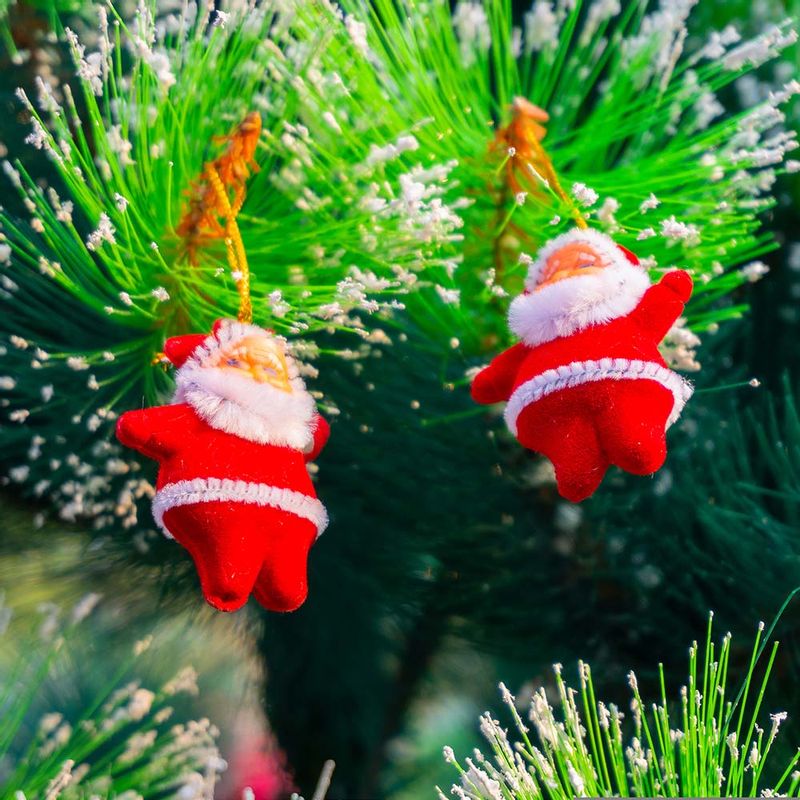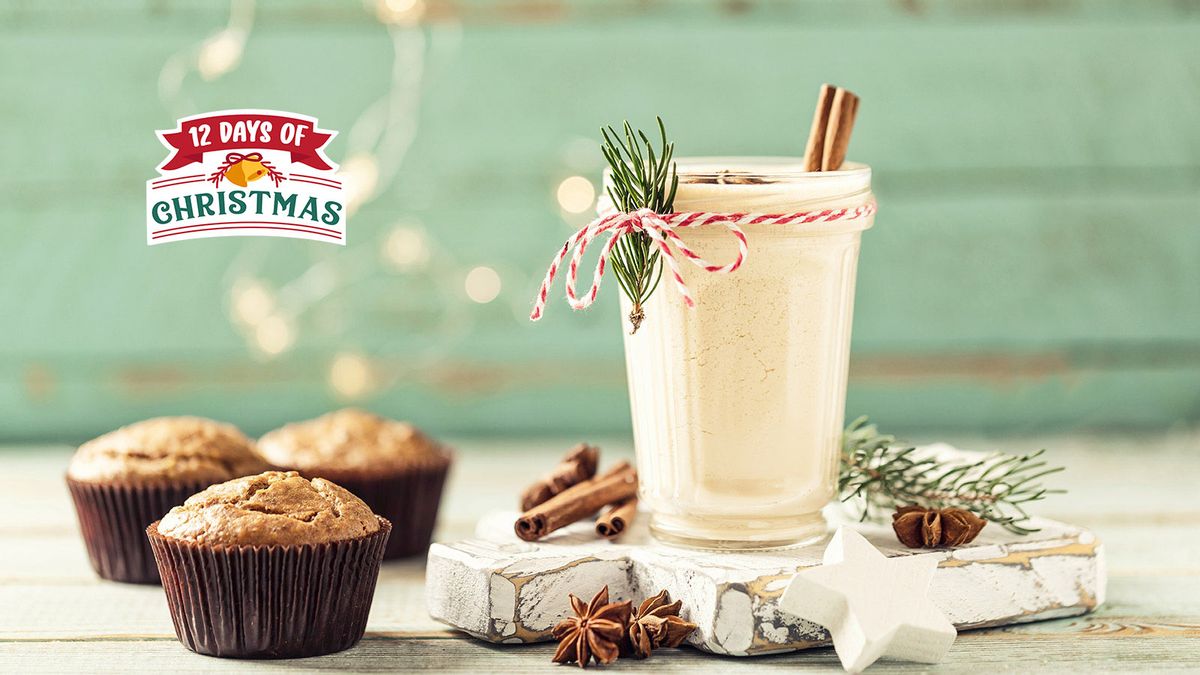Snapshots
The history of Christmas and ensuing celebrations in India are as old as the arrival of Christianity in the country. Most consider that Christianity came to India with the arrival of Saint Thomas in 52 AD, one of Jesus Christ's 12 Apostles, in Kerala, but according to Robyn Andrews in his book Christmas in Calcutta: Anglo-Indian Stories and Essays, “The introduction of Christianity in Goa fits more closely with the ‘Christianity came to India with colonialism’ model: in the late 16th century, a western-based version of Catholicism arrived with the Portuguese colonists to be spread by accompanying missionaries. Since the arrival of Christianity in India, many different ritual forms of Christianity have developed in reaction to practices already in place.”
The exact date of the birth of Christ was decided almost two centuries after his death. Today, Christmas is celebrated on December 25 in Catholic, Protestant and most orthodox churches. In India, Christmas may have been established as a borrowed concept, however, it has picked up local flavours, making it as Indian as any other festival.
The Christmas tree, which is said to have been first used in Germany, is omnipresent. Father Christmas or Santa Claus visits children, blessing them with gifts and is fondly known as 'Christmas Baba' in Hindi, 'Christmas Thaathaa' in Tamil and Telugu, and 'Natal Bua' in Marathi and also 'Christmas Papa' in some other regions.

Indian Christians also put up a crib depicting the Nativity scene, which is the birth of Jesus Christ and the Star of Bethlehem guiding the Three Wise Men to the new-born King. Coming to food, fruitcakes, for example, which have a British origin, are a welcome sweet in most homes and are better known as plum cakes. Rose cookies, on the other hand, are of Dutch origin. Besides, a lot of the other Indian sweets prepared around Christmas are the result of Portuguese and French influence. Christmas is, therefore, a true melting pot of all the cultures that were part of India during colonial times.
Goa and Mangalore
For most Goan and Mangalorean Christians, December is a culinary high point of all festive occasions, with a sweetmeat making frenzy. Recipes tumble out like family heirlooms and find their way out of traditional households. Borrowing the tradition of ‘consoada’ from the Portuguese, Goans and Mangaloreans have created a desi version, ‘kuswar’ to reflect local culinary traditions, which include a mix of baked, steamed, and fried goodies. These goodies then find their way into kuswar trays which are shared with neighbours and friends on Christmas.
When asked what one would find in a Goan kuswar, Leena D’Souza, a 75-year old native Goan, who now lives in Mumbai says, “Neurois (also called karanjis and gujiyas) are a common sight. Made from wheat flour and filled with sweetened semolina or grated coconut, raisins and nuts, they are shaped like crescent moons.
Another common sweet resembles a fried shell pasta called kulkuls; they are curls rolled on the fork and then dipped in icing sugar. Apart from these, there are other local sweets such as dodol, a soft jaggery fudge; doce, made from ground coconut, sugar and chana dal; bolinhos, made from almond-paste semolina, sugar, eggs and brandy, and guava cheese.”
When it comes to Christmas lunches and dinners, pork is a must, she says. On the other hand, “A typical Mangalorean kuswar features a range of local delicacies such as kidiyos (kulkuls); gulios, sweet rice marbles, kokkisan, rose cookies; pathekan, banana chips; tukdi, also called diamond cuts and similar to shankarpalis; and thandhlache laadu, which are roasted rice laddus to name a few”, says Rita Dsa, a 37-year-old homemaker.
A typical Christmas lunch or dinner in a Mangalorean home is incomplete without the spicy coconut and cardamom enriched chicken curry, which is scooped off with kori rottis, thin crisp, flatbreads made from rice. "At times, we also serve up polov, a mutton curry; sannas, spongy steamed savoury rice cakes; pork bafat (at times called dukkaracha mass–pork meat), or kori rassa, chicken curry made with coconut milk and other secret spices,” Dsa adds.
“Christmas lunch at our place always consists of some chicken preparation, pork sorpotel and pulao,” says D’Souza, when asked about a Goan Christmas menu. Chicken Xacuti (sha-ku-tee), a spicy and meaty preparation; and the pork vindaloo, an ultra-hot curry that’s typically seasoned with wine, vinegar and garlic, are among the other Christmas specials.
Tamil Nadu
Christmas for Jesus Vivian Raja, a theology student and a native to Tamil Nadu, who is now living in Delhi, would mean helping his mother prepare sweets from scratch, decorating the house, putting up stars and setting up the crib. He reminisces, “Back in Tamil Nadu, we would prepare Mulaipari, sprouting grains placed in a basket as a symbol of prosperity; the healthy seedlings reflect the celebrations of the birth of Christ and his role in our life.” Besides, he says, Tamilians also spend the days leading up to Christmas preparing both sweet and kaaram (savoury) items, which are then distributed to others, especially the neighbouring families belonging to other faiths.
Sweets such as munthiri kothu, made from green gram and jaggery; athirasam, a deep fried sweet-snack; kalakalas (diamond-shaped biscuits similar to kulkuls) and rose cookies or achu murukku. He says, “Celebrations here continue even during New Year and on that day, we Christians prepare kalapu arisi, mixed rice which contains soaked rice sweets and grains. This mixed rice is brought to church, collected in a big vessel, blessed and distributed to all who come to the church. Christmas celebration ends with Epiphany, when all Christians come together and prepare Pongal, which is then blessed and distributed to all.
Kerala
For chef Thomas Zacharias, chef at The Bombay Canteen in Mumbai, Christmas has always been about spending quality time with his family. “Growing up in Kerala, we would all gather at my grandparents’ house in Kochi to celebrate together. We would spend the Christmas morning opening gifts kept under the tree – a family tradition close to my heart,” he says.
This was followed by relishing an elaborate spread cooked by his grandmother. Talking about the same, he says, “It included pork, beef, duck and potato curry, and some local vegetables. The highlight of the feast for me; however, was the roast chicken she made. Unlike the typical roast chicken, which is made in the oven, my grandmother’s version was made in a large wok. Mainly because ovens weren’t a part of the cooking culture then.” The feast ended with his grandmother’s Christmas special cake or pudding.
Shillong, Meghalaya
Christmas comes early in Shillong, the capital of Meghalaya, and its celebrations are a combination of traditional local delicacies, carols, and togetherness. Just like other parts of India, Christmas here means visiting friends and family to wish and share food. “Traditionally, Christmas special lunch or dinner in Shillong calls for Jadoh, which is a delightful rice dish prepared with pork or chicken fat. Earlier, it used to be made with pig or chicken blood; however, today, people stick to fat. A few other popular delicacies relished during this time are dohneiiong – a pork-based preparation made with black sesame paste and soy beans – and tungrymbai (fermented soybeans eaten with bread or roti),” says Therisia Pohlong, a Shillong-native. Ask her about desserts and Pohlong adds, “In Shillong, we’re not big on desserts. Of course, there is the Christmas cake that most make or buy, but apart from that there is nothing specially made.”
Food aside, Christmas celebrations in Meghalaya’s capital city also includes the midnight mass on its eve. Pohlong’s personal favourite is the community picnic organised by the churches post the festival. “They are all about good food, games, and festive cheer,” she shares.
Mumbai, Maharashtra
Days before Christmas, there’s a distinctive sweet aroma that wafts through Regina and Bernard Periera’s home, an East Indian couple living in Vasai Gaon near Mumbai. The fragrance comes from a fresh batch of sweet and savoury snacks – kulkuls, neuris (karanjis), date rolls, and more -made for kuswar.
On Christmas eve, Regina and Bernard, like most people in their community, prepare a soul-warming, traditional gavati chicken (country chicken) soup called Pintyacha soup. “Making this soup is a Christmas eve tradition among us East Indians. It’s the first thing we have once we return home after the midnight mass. It is accompanied with other treats,” explains Regina Periera, who also hosts East Indian meals with her husband via Authenticook, a platform that offers authentic social dining experiences. Post this meal, people usually leave home to attend parties in the vicinity, which go on till sunrise.
On Christmas day, she says, “Most of us wake up late after partying the night before. The day starts with sending out sweets to family and friends and continues with the elaborate lunch preparation. Traditionally, roast turkey or duck moilee is prepared for the Christmas lunch. But, at our home, since it is just me and my husband, and we can’t finish an entire turkey, we go for a moilee with pork ribs or chicken biryani.” Evenings are generally spent watching or participating in sports and entertainment activities organised by the church.
Kolkata, West Bengal
Last, but not least, Kolkata is another merry city where Christmas is celebrated with much pomp and joy. Its highlights include the Kolkata Christmas Festival at Park Street, a one-of-a-kind fiesta that can easily be termed as an open-air Christmas party and the midnight mass at St Paul’s Cathedral.
Apart from that, one can’t miss homemade wines and traditional Anglo-Indian delicacies sold by community people in Bow Barracks, located in central Kolkata. What adds to the overall festive cheer is the carol/hymn singing and music in this Anglo-Indian area.


